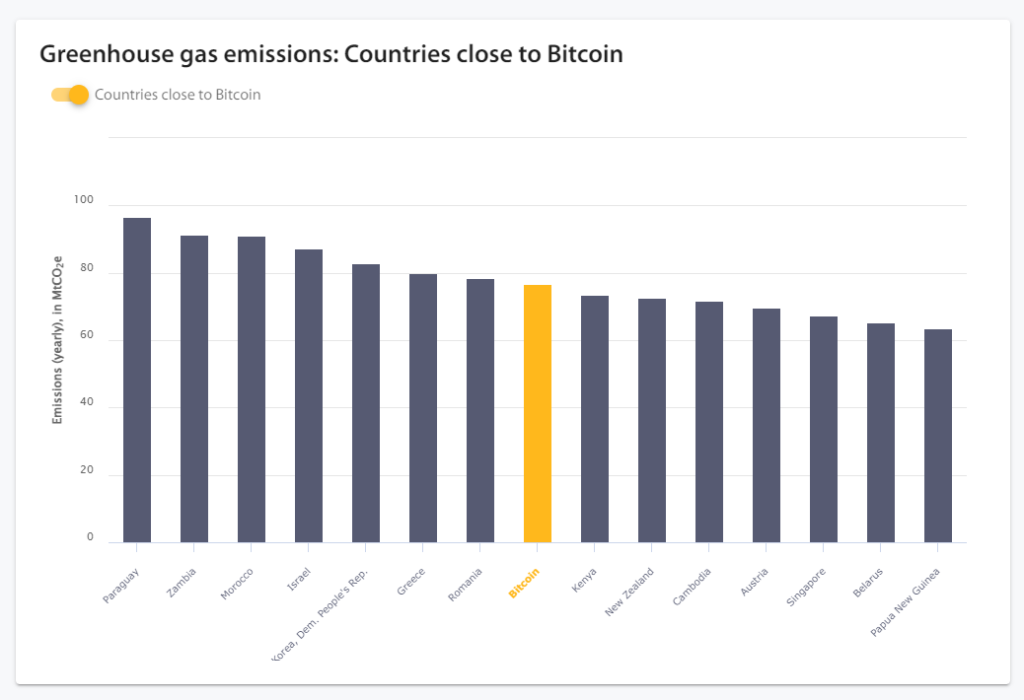Reaching an agreement in a blockchain network is the consensus problem. It is both complex and crucial. Consensus algorithms are the backbone of this process. They ensure the security and validation of transactions within the network.
- Precedence of Social-Based Consensus Mechanisms
- Comparison Proof of Work (PoW) vs Proof of Respect (PoR)
- Understanding Proof of Work (PoW)
- Understanding Proof of Respect (PoR)
- Proof of Work vs. Proof of Respect: Implementation and Operation
- Proof of Work vs. Proof of Respect in High-Volume Transactions
- Comparing Decentralization and Power Distribution in PoW vs. PoR
- How PoW vs. PoR Protect Blockchain Networks
- Resource Consumption and Environmental Impact in Proof of Work vs. Proof of Respect
- Conclusion
Indeed, numerous consensus mechanisms have been developed over the years, all of them bearing both their advantages and drawbacks. This variety can make it challenging to select the right approach for specific real-world applications, whether it be distributed computing, load balancing, or transaction validation in blockchain networks.
The blockchain community’s ongoing quest for better, greener, and fairer consensus mechanisms has inspired the development of Quranium, a blockchain project that formalizes the concept of ‘Proof of Respect (PoR)’.
Proof of Respect (PoR) offers a fresh perspective in contrast to traditional methods like Proof of Work (PoW) by introducing a novel approach of incorporating social metrics and behavior-based evaluations into the consensus process.
This article will provide a comparative analysis of these two fundamentally different approaches—Proof of Work vs. Proof of Respect—and evaluate how they address the practical needs of blockchain networks.
Precedence of Social-Based Consensus Mechanisms
While Quranium is the first to formalize and implement “Proof of Respect” as a named consensus mechanism, the concept of integrating social metrics into blockchain consensus isn’t entirely new. These earlier explorations set the stage for PoR by showing the potential benefits of reputation and behavior-based consensus.
For example, a 2021 research paper titled “Proof-of-Reputation: An Alternative Consensus Mechanism for Blockchain Systems” comes up with a consensus model whereby only nodes with the highest reputation values can take part in the decision-making. This works on enhancing security measures by promoting honest behavior; it, therefore, motivates nodes to keep good reputations.
Similarly, “Proof of Authority,” another consensus model, involves validators earning their position based on their identity and reputation within the network. The most outstanding platforms using PoA are VeChain, Bitgert, Palm Network, and Xodex.
Another study from 2023, discusses how reputation-based models address some of the limitations of PoW, such as scalability and energy consumption, while enabling more flexible participation.
With the groundwork laid by these earlier explorations into social-based consensus, we now turn our attention to a direct comparison between the oldest and most established consensus mechanism—Proof of Work, first implemented by Bitcoin in 2009—and the innovative Proof of Respect introduced by Quranium.
Comparison Proof of Work (PoW) vs Proof of Respect (PoR)
While both consensus mechanisms aim to secure the integrity of the blockchain, their means and methodologies, as well as their philosophy and implications, are different. Here’s a rundown of what we’ll discuss in detail—
| Aspect | Proof of Work (Pow) | Proof of Respect (PoR) |
| Core Concept | Utilizes computational power to validate transactions | Focuses on trust and community engagement for consensus, rewarding validators based on contribution and behaviors |
| Mechanism | Miners solve cryptographic puzzles to add blocks to the blockchain sequentially. | Validators are ranked and chosen based on social metrics. |
| Security | High security due to computational difficulty of altering the blockchain. Susceptible to 51% attacks. | Security relies on social trust and the reputation of validators integrated with quantum-resistant cryptographic algorithms. |
| Scalability | Faces scalability issues due to time and energy intensive mining processes. | Enhanced scalability through the use of BlockDAG that allows parallel processing of transactions. |
| Decnetralization | Tends to centralize as mining becomes feasible only for those with significant resources. | Promotes a decentralized and equitable network by distributing validation power based on merit and participation. |
| Efficiency | Less efficient due to linear processing and high energy consumption. | More efficient by grouping transactions and utilizing validators with high reputation and reducing energy consumption. |
| Environmental Impact | High energy consumption | Minimal energy usage |
| Adaptability | Adapts by changing the difficulty of puzzles. | Dynamically adapts by reassessing and adjusting validator rankings |
| Resource Requirement | Requires extensive computational power and electricity | Requires minimal physical resources; focuses on social contributions and engagement. |
| Governance | Miners with more power have more influence over the network. | Power is based on respect and contributions, leading to a fair and community driven governance model. |
Understanding Proof of Work (PoW)
Proof of Work is the original consensus algorithm, first utilized by Bitcoin and subsequently adopted by many other cryptocurrencies. At its core, PoW is a cryptographic proof demonstrating that a certain amount of computational effort has been expended.
This mechanism is heavily grounded in game theory and was designed to see all nodes in a decentralized network reaching an agreement on the state of the blockchain without the need for a central authority.
Understanding Proof of Respect (PoR)
Proof of Respect changes the way how consensus is achieved by emphasizing trust and community engagement over computational power or financial investment. PoR creates a more equitable and fair consensus mechanism by dynamically ranking validators based on their contributions and behaviors within the network.
PoR adds a social dimension to blockchain governance, while traditional methods generally tend to rely on either computational resources, as in the case of PoW, or financial stakes, as in the case of Proof of Stake. It gives rise to the importance of respect and reputation.
In the PoR system, validators are continuously evaluated and ranked based on several criteria, including the accuracy of their transaction validations, their active participation in the network, and their overall contributions to the network’s health.
High-ranking validators are entrusted with greater responsibilities, incentivizing them to maintain high standards of participation and accuracy. Conversely, any malicious or harmful behavior leads to a lower ranking, reducing the validator’s influence and rewards.
Proof of Work vs. Proof of Respect: Implementation and Operation
- Proof of Work (PoW)
Miners in PoW systems use their computational power to solve cryptographic puzzles. This process is linear and sequential, meaning blocks are added to the blockchain one after another. While this ensures that each block is securely validated, it can lead to bottlenecks in periods of high network traffic, causing concern regarding its long-term sustainability.
The cryptographic hash function used in Bitcoin’s PoW is SHA-256. Miners must find a hash that is lower than a predetermined target, a task that becomes increasingly difficult as more miners join the network.
To maintain a consistent block generation time—approximately every 10 minutes in Bitcoin’s case—the network adjusts the difficulty of these mathematical problems regularly. This adjustment occurs approximately every 2,016 blocks (about every two weeks), based on the time it took to mine the previous set of blocks.
When a miner successfully finds a valid hash, they broadcast the new block to the network. Other nodes validate the block by checking its hash and the transactions it contains. If the block is deemed valid, it is added to the blockchain, and the miner receives a reward in the form of cryptocurrency.
This makes the process simple in mechanics yet resource-intensive, and it can bog down the network during peak times.
- Proof of Respect (PoR)
In a very unusual approach, PoR selects people to be validators using social, instead of mathematical, metrics. They are then selected based on their placement in the continuously updated rankings in the PoR, so the one with a higher rank has more responsibilities as opposed to the others. This makes the most credible, skilled participants responsible for critical tasks involving network management.
- Batched Transactions: Transactions are grouped into batches based on timestamps and then allocated to top-ranking validators. This method not only increases efficiency but also ensures that those with the highest reputation manage the bulk of network traffic.
- Adaptive Network Management: The PoR system is designed to dynamically adapt to changes in network traffic and validator performance. By continuously reassessing validator rankings, the system can allocate resources more effectively.
- Integration with BlockDAG: PoR is integrated into Quranium’s dual-layer architecture through the BlockDAG (Directed Acyclic Graph) layer. The BlockDAG allows for parallel processing of transactions, which is essential for scalability.
PoR adds a layer of social governance, ensuring that validators responsible for managing these transactions are acting with integrity and respect.
Proof of Work vs. Proof of Respect in High-Volume Transactions
Scalability remains one of the major challenges for systems like Bitcoin. The time-intensive process of mining, coupled with the energy demands, often results in slower transaction processing and network congestion, especially during peak periods.
- Critics of PoW argue that the efficiency and scalability inherent to more contemporary consensus models, favoring more modern, tailor-made designs and constructs, are sorely lacking in PoW.
- In contrast, the proponents of Bitcoin argue that the confirmation delays are deliberately programmed into the system as a trade-off for security. Innovations like the Lightning Network are also being developed to enhance the scalability of PoW systems by enabling faster, off-chain transactions.
On the other hand, PoR, integrated with BlockDAG, offers a more scalable and efficient solution.
- Multiple block validations at a go, which contrasts its linearity and sequence in PoW-based blockchains, define BlockDAG. This parallelization not only increases throughput but also reduces the likelihood of “orphaned” blocks—blocks that are discarded in traditional systems, wasting computational resources.
By incorporating these blocks into the network’s overall structure, BlockDAG improves efficiency and supports a higher volume of transactions without compromising security.
Comparing Decentralization and Power Distribution in PoW vs. PoR
Decentralization via Competition in PoW
- While Proof of Work is designed to promote decentralization through competitive mining, the reality is that mining power often becomes concentrated among a few large entities.
- In practice, the cost of mining equipment and electricity prices is very high, which means that centralization is done in the hands of those who have considerable resources.
- This concentration of power can undermine the decentralized ethos of PoW.
- In response, some PoW networks are experimenting with ASIC-resistant and GPU-friendly algorithms to level the playing field and make it easier for smaller miners to participate.
Despite these efforts, the inherent nature of PoW tends to skew power towards those who can afford the most computational resources, leading to a form of centralization over time.
Decentralization via Merit in PoR
- On the other hand, Proof of Respect takes a different approach by distributing power based on respect and contributions rather than computational or financial resources.
- This model encourages a more decentralized and equitable network where influence is earned through positive behavior and active participation.
- By valuing merit over wealth, PoR ensures that power is more evenly distributed among participants, and the network itself is designed to be more resilient to domination by a few powerful entities.
Here, validators are assessed by the value of their contributions to the health of the network and community standards, not by the ability to acquire large amounts of capital or computational power. This not only encourages broader participation but also aligns the network’s values with principles of fairness and inclusivity.
How PoW vs. PoR Protect Blockchain Networks
We have established the fact that Proof of Work (PoW) requires immense computational power to alter the blockchain, which makes it highly secure it is prohibitively expensive for malicious actors to take control.
To successfully manipulate the blockchain, an attacker would need to control over 50% of the network’s computational power, a scenario known as a 51% attack. This high threshold for manipulation has made PoW a reliable standard for securing decentralized networks.
Proof of Respect (PoR), on the other hand, offers a unique form of security by utilizing a social governance layer.
- In PoR, only validators with a strong reputation and a proven track record of ethical behavior and accuracy are given significant responsibilities.
- This dependence on social trust introduces an additional security layer, making it challenging for malicious actors to gain influence without first establishing and upholding a respected reputation within the network.
- In the face of emerging threats such as quantum computing, PoR’s security model becomes even more relevant. Algorithms like Shor’s algorithm could potentially undermine traditional cryptographic systems, including those used in PoW and Proof of Stake (PoS) networks.
Quranium, which introduced the PoR concept, has been designed with quantum resistance in mind. By integrating quantum-proof cryptographic algorithms, such as SPHINCS+ and WOTS+ (Winternitz One-Time Signature Plus) approved by NIST, Quranium ensures that its network remains secure against future quantum attacks.
The combination of PoR with Quranium’s quantum-resistant infrastructure creates a multi-layered security framework. While quantum-proof cryptography safeguards the network against cryptographic attacks, PoR ensures that only trusted and respected validators can influence the network, protecting it from internal threats.
Resource Consumption and Environmental Impact in Proof of Work vs. Proof of Respect
One of the most significant drawbacks of Proof of Work is its high energy consumption.

- For instance, Bitcoin’s energy consumption has been compared to that of entire countries, such as Argentina or the Netherlands, depending on mining activity and the energy sources involved.
- The environmental impact is worsened in areas where mining relies heavily on fossil fuels, leading to a substantial carbon footprint.
- The need for specialized hardware, such as ASICs, not only raises barriers to entry and centralizes power in the hands of those who can afford these technologies but also increases energy consumption.
In contrast, Proof of Respect offers a far more environmentally friendly alternative.
- PoR does not rely on energy-intensive computational tasks; instead, it rewards validators based on their meaningful contributions to the network.
- This system significantly reduces energy consumption, as it relies on social metrics and behavior-based evaluations, which require minimal energy compared to the massive computational demands of PoW.
- By prioritizing ethical behavior and community engagement over brute computational force, PoR presents a more sustainable and scalable solution for blockchain networks, aligning with growing global concerns about environmental sustainability.
Conclusion
In comparing, Proof of Work vs. Proof of Respect, it becomes evident that these two consensus mechanisms represent fundamentally different approaches to securing and maintaining blockchain networks.
Proof of Work, with its reliance on computational power and energy-intensive processes, has long been a cornerstone of decentralized networks, providing robust security at the cost of significant environmental and centralization concerns.
On the other hand, Quranium’s innovative “Proof of Respect” introduces a paradigm shift by integrating social metrics and behavior-based evaluations into the consensus process, offering a more sustainable, equitable, and community-focused alternative.
While PoW has proven its effectiveness in the early days of blockchain, PoR addresses many of its limitations by prioritizing trust, respect, and environmental responsibility. The choice between these mechanisms will reflect the values and priorities of the networks that adopt them, potentially leading to a future where ethical behavior and social governance play a central role in decentralized technologies.



















